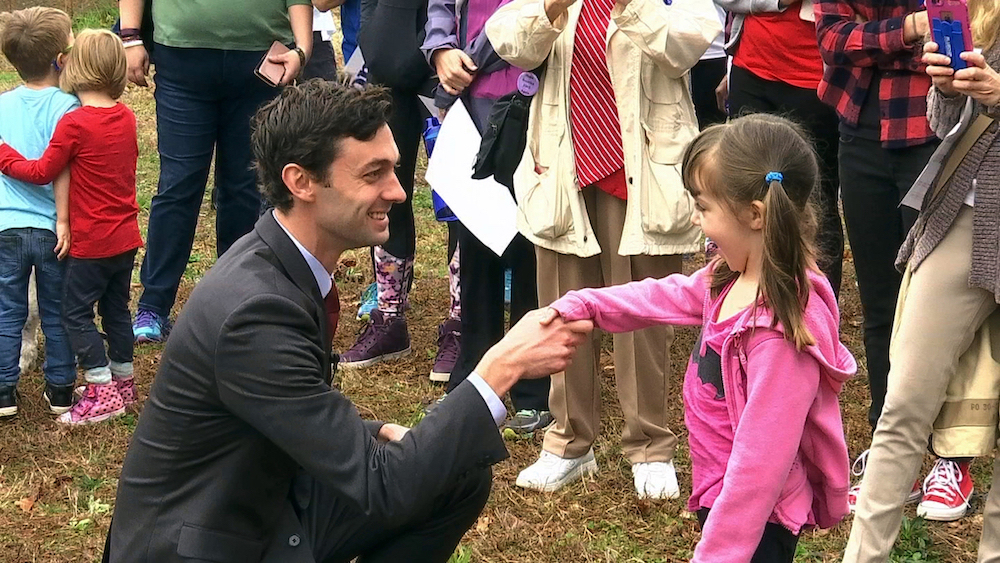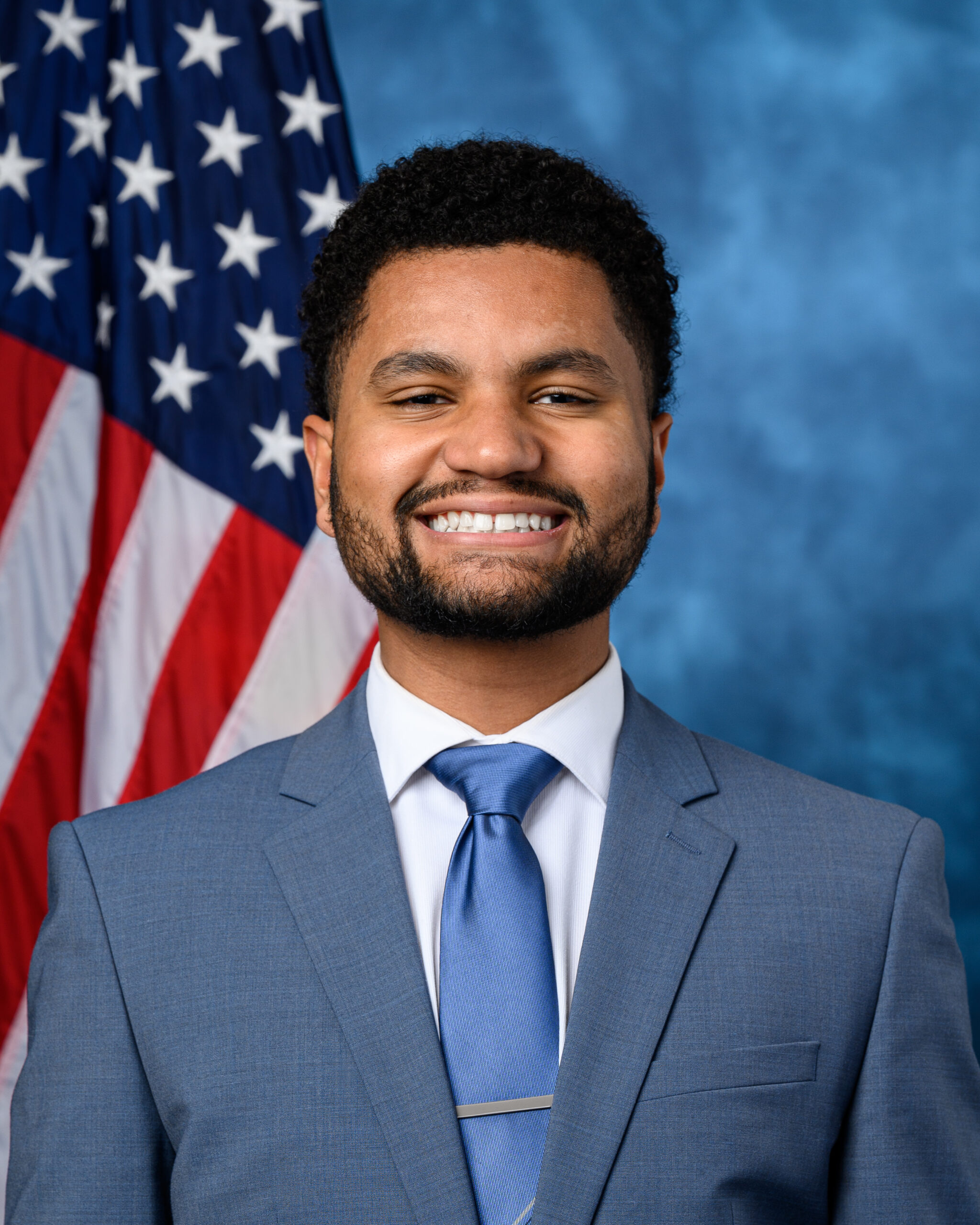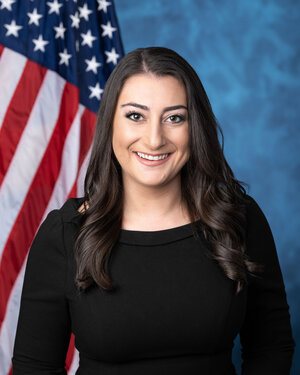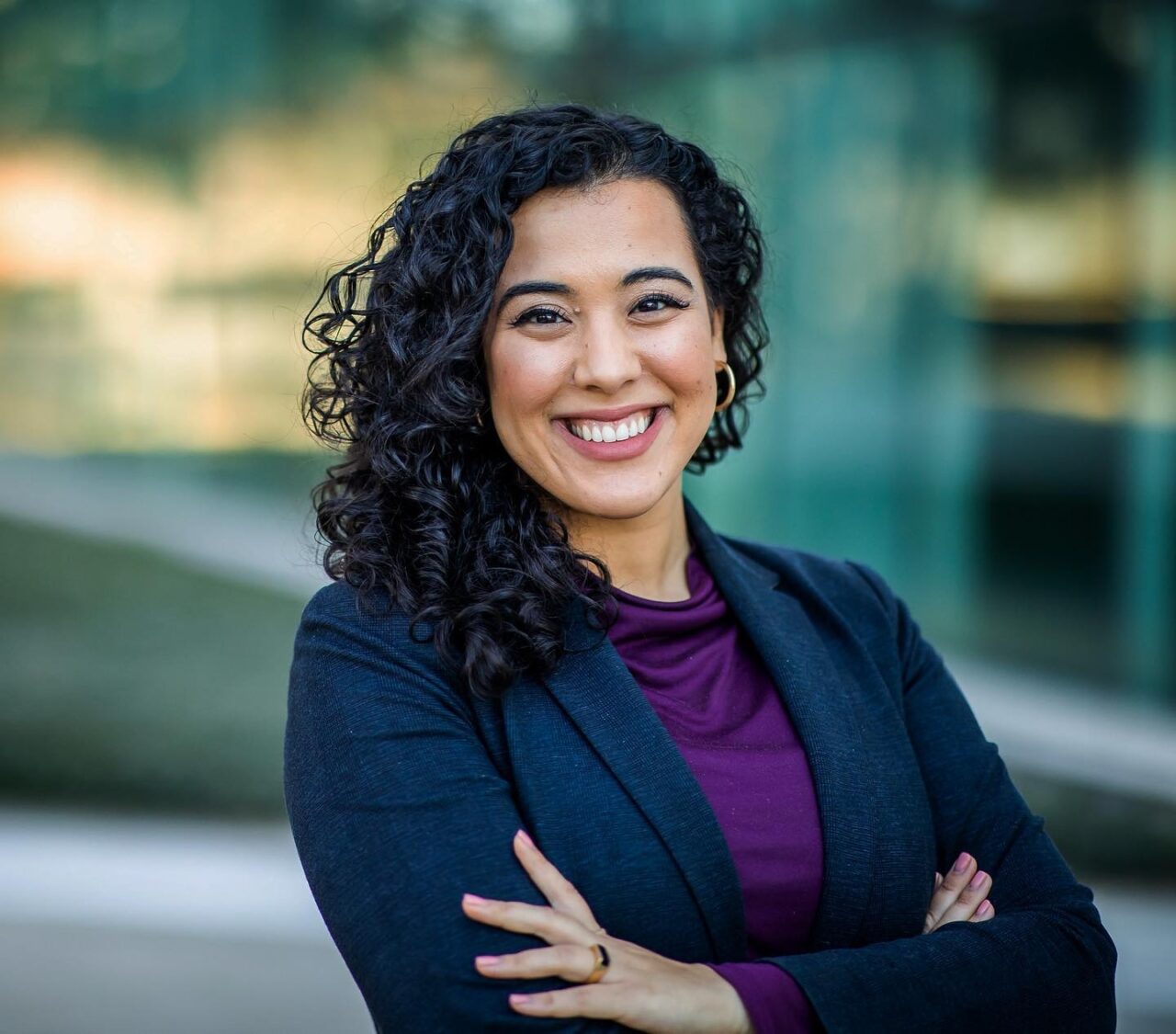Their Generation: The Promise of Younger Elected Officials
June 11, 2024

By Layla Zaidane, Future Caucus President & CEO, in The Democracy Journal
“You can be anything you want to be when you grow up.”
Parents and teachers speak these words to children all over the country. With permission to dream, children are unleashed to imagine themselves as professional athletes, firefighters, teachers, and doctors. Less common is the dream of one day becoming a politician, and certainly rare is the young person dreaming of working for their state legislature. It’s fair: Balancing a budget and leading oversight hearings are a tough match for winning Olympic gold. And when politics feels so exhausting, and so few elected officials are universally admired, a young person might be forgiven for not aspiring to public service.
Perhaps this helps explain why so few young people currently hold elected office—in fact, only 10 percent of Congress and 25 percent of state legislators are Gen Z or millennials (that is, born between the 1980s and early 2010s), despite those generations accounting for 43 percent of the population. According to NPR, politicians in Congress today are older than they’ve historically been. And while many great organizations are focused on the challenge of recruitment—helping young people run for office in the first place—that’s only half the battle. If we want to help more talented, public service-oriented young people see themselves as legislators, then we need to focus on retention of the Gen Zers and millennials in state and local office today. From building supportive peer networks to creating more opportunities for mentorship and professional development to passing new policy to improve legislative operations, several immediate opportunities exist to support the next generation of lawmakers as they shape our country’s future.
This is not an exercise in generational favoritism. There’s plenty of evidence to suggest that young people entering policymaking roles have great instincts for effective governance that are worth nurturing.
Take this stat: In 2022, 40 percent of all bipartisan bills signed into law at the state level were introduced by a Gen Z or millennial legislator. What’s remarkable about that figure is that, as noted above, those generations only account for one-quarter of all state lawmakers. They are statistically overperforming when it comes to finding ways to pass bipartisan legislation, thanks to a sense of urgency that lends itself to a solutions-oriented pragmatism.
Or consider this data point: The policies advanced by this cohort tend to focus on issues that frequently poll as top priorities for Americans across the country. Young legislators have written bipartisan laws that tackle the opioid crisis, improve maternal health outcomes, and build pathways to new jobs. They are addressing the problems that propelled them into office with solutions, and they have a remarkable ability to work with whomever they need to in order to get those solutions across the finish line.
But this noble and altruistic work is not easy. Lawmakers, faced with toxic polarization, under-resourced workplaces, and low pay, are increasingly calling it quits. And while some departures are from leaders retiring at the end of long careers in public service, a growing number of retirees are young, diverse members who had more to give. As Representatives Karin Power, Rachel Prusak, and Anna Williams—three Oregon state lawmakers in their 30s and 40s who didn’t run for reelection in 2022—said in their joint resignation letter: “If this system is built for the financially well-off or the retired, will it ever work for you? What interests does this current structure serve?”
So how can we avoid a devastating generational talent loss among our elected leaders? And if younger legislators are demonstrating an outsized capacity to build coalitions around critical issues and actually succeeding at getting their solutions signed into law, how can we support and scale this effective leadership before it morphs into the less productive hyperpartisanship more popular with their older counterparts? Solving the retention problem may be the key to a future with more representative public policy, less political polarization, and higher trust in our democratic institutions.
To understand how to best support young lawmakers, it helps to understand the context in which they are deciding to run and serve in the first place. Millennials were coming of age when 9/11 happened. We were teens when Facebook launched, an online community available only to those with a “.edu” email address. We were 21 during the 2008 housing crisis, and many of us graduated into the Great Recession with low job prospects and high student debt. As a generation, millennials had a front-row seat to the failures of institutions, but also to the opportunities for entrepreneurial-minded young leaders to reimagine—and shape—the future.
A twin dissatisfaction with the way things were and an optimism about the way things could be is the backdrop for many millennials who ultimately decided to run for state and local office.
Gen Z, on the other hand, came of age with good reasons to be less optimistic about the future. From practicing active shooter drills in middle school to seeing the inaction by politicians as the threat of climate change grows to witnessing the government’s disjointed response to the COVID-19 pandemic, Gen Z has a healthy skepticism that our current institutions will deliver us safety and security. And yet, polling continues to show that more than three-quarters of Gen Z say they have a great future ahead of them. When it comes to imagining their individual futures, they are optimistic that they will achieve their goals.
This ability that many Gen Zers have to untangle a potentially bleak collective future from a positive individual future should perhaps come as no surprise. As the first generation to grow up entirely in the digital age, the generation least likely to get their news from cable TV or radio, and the generation that is driving “unaffiliated” or “independent” as the fastest growing political affiliations, they are no stranger to charting their own course. Thanks to the internet, they are both more connected than any generation in human history and more able to curate their own personal narratives.
As digital natives, their communication style, approach to problem solving, and expectation that every choice will have a wide range of options look different than even what we see from the millennials before them. As Gen Z begins to win elected office—in 2024, only one member of Congress and fewer than 100 state lawmakers are Gen Z, though these numbers are rapidly growing—these leaders seem to be operating with no less of a sense of optimism and agency, but with a more personalized approach to getting things done.
For Gen Zers and millennials fueled by hope for what is possible, connected to communities who are eager for change, and empowered with a belief in their own ability to creatively solve problems, state and local elected positions provide an accessible entry point to directly converting this energy into public policy.
Take Kansas State Representative Christina Haswood, who was born in Lawrence, Kansas, following her parents’ relocation from the Navajo Nation reservation in Arizona. A member of Gen Z, she decided to run for office when she witnessed the COVID-19 pandemic’s disproportionate impact on Indigenous populations. “To see the argument that this pandemic and this health virus wasn’t taken seriously was really concerning to me. So I knew I wanted to bring the advocacy that I had,” she told me in 2023, at an event for young lawmakers hosted by my organization. Rather than wait for somebody else to do something about the crisis, Haswood saw that the shortest route to the solution was through her own public service and rallied her community to make her the youngest ever elected Indigenous person in the Kansas state legislature. In office, Haswood has worked with a bipartisan group of young Kansas state lawmakers to write and pass a first-time homebuyer’s tax credit aimed chiefly at young people.
Unfortunately, several systemic barriers risk exacerbating state legislatures’ retention problem. Across the country, state legislatures vary widely when it comes to their legislative operations. In some states, legislators earn a healthy salary—$128,000 in California, or $106,000 in Pennsylvania. Yet New Hampshire lawmakers have earned $100 a year since 1889, and some state legislatures don’t pay at all. According to the National Conference of State Legislatures, the average base pay for legislators in 2021 was $39,216—compared to the inflation-adjusted average of $43,521 that legislators were paid in 1970. Many states have not seen an increase in legislative wages for decades, and in 21 states, legislators are prevented from spending their campaign funds on certain necessities, like child care.
A high income is not a reason why people run for office in the first place, yet earning too little means that legislators may need to take on second or third jobs in order to cobble together a living. But public service is not a part-time job, and having to split focus and dedicate time to too many other responsibilities comes at the expense of things like constituent services. Further, it means that only those who can afford to take a low-paid job can serve. For a young person—who is potentially paying off student loans, saving for a home, or perhaps trying to start a family—low pay can be particularly prohibitive.
It’s not just about compensation. Equipping policymakers with the resources to carry out their duties means ensuring they have teams around them who can support their legislative activities. Many state legislatures experience a shortage of staff for essential legislative functions such as research, drafting, and constituent communication—tasks substantial enough to necessitate full-time attention. Contrary to popular belief, legislators are often juggling these responsibilities themselves. In Georgia, for example, each legislative staff member supports eight legislators. This lack of assistance means lawmakers are stretched thin when it comes to doing policy research or leading comprehensive constituent engagement. This reality ultimately creates a built-in dependency on lobbyists or other advocates. With Supreme Court decisions and gridlock in Congress driving more policymaking to state legislatures, this lack of adequate staff resourcing is simply unsustainable and will lead to burnout.
Finally, many lawmakers must navigate toxicity on the job daily, whether that be threats from angry constituents or hostility from colleagues who make it difficult to build trust in the workplace. According to the Brennan Center, 43 percent of state lawmakers report being seriously threatened or assaulted in the past three years. Representative Will Haskell, elected to the Connecticut State Senate as a recent college graduate, woke up one night to the sound of his windows shattering. Someone had thrown a brick into his house because of his vote on a contentious bill. Beyond the threats to physical safety, the vitriol hurled online at lawmakers can take a toll on their mental health, with social media contributing to the increase in harassment. Women and people of color are three times more likely to be targeted with this behavior.
With the culture of policymaking becoming more toxic as political polarization grows, the legislature is simply a less productive and enjoyable place to work. For many young lawmakers, this is the straw that breaks the camel’s back. Despite their sense of purpose and pride in serving their community, the combination of being under-resourced, overworked, and under threat means that the young people who are bringing a desperately needed fresh perspective to our governing process are finding it harder and harder to justify staying in these roles.
The good news is that there are a number of opportunities to address these challenges. And there is a growing push among Gen Z and millennial lawmakers to tackle the problems that might otherwise prematurely squeeze public servants out of their careers.
For one, they are finding ways to build support systems within the legislature. Legislator affinity groups are a powerful way to form trusted networks by connecting around a shared identity. Future Caucus—a cross-partisan, national network of 1,800 Gen Z and millennial state and federal elected officials—has proven to be a successful vehicle for just that. As president and CEO of Future Caucus, I’ve spent the past eight years helping these young leaders build strong relationships across lines of division and equipping them with the tools they need to be successful in their careers. Lawmakers in Congress and in 34 state legislatures have launched their own bipartisan Future Caucus chapters, connecting the youngest members of the legislature along a generational identity rather than a partisan one. This allows young elected officials to transcend polarization and build trust in an environment that isn’t always conducive to that.
Affinity groups also provide a supportive environment for individuals who may face similar threats or security concerns. One female legislator admitted to being on the cusp of resignation before she met other young lawmakers through the Future Caucus network. In her words, simply having a peer group to lean on, commiserate with, and relate to provided the motivation and comfort she needed to stay in office. A day after being introduced to the network of other young leaders, she filed to run for her second term.
Secondly, there are clear opportunities for more mentorship and professional development programs for newly elected lawmakers. A recent Gallup report found that 59 percent of millennials say opportunities to learn and grow are extremely important to them when applying for a job. That’s more than any other generation, and legislators are no exception. The demand for these programs has led to increased investment from legislatures and civil society to deliver support, ranging from congressional recommendations for better onboarding of new lawmakers to state legislatures appropriating funds to provide ongoing opportunities for mentorship and professional development, such as the Texas Legislative Council.
Finally, policy change can effectively create more productive work environments for diverse legislative leaders. Given the disproportionate impact outdated practices are having on this generation of elected officials, young state legislators have been vocal about opportunities to improve legislative operations. Many of these changes can be achieved through legislation, ballot measures, or administrative and regulatory changes.
These proposals include increasing legislator pay; changing laws to make it easier for parents—especially of young children—to serve in the legislature; leveraging technology to modernize everything from committee hearings to remote participation; and increasing budgets for recruiting and retaining top talent in legislative staff roles.
Providing these supports can unlock transformative change. In Oklahoma, bipartisan young lawmakers recently demonstrated what is possible with the right set of supportive conditions. State Representative Daniel Pae (a Republican) and State Senator Carri Hicks (a Democrat) built a strong working relationship by getting to know each other through their state’s Future Caucus, which they decided to co-chair together. After using that network to establish a foundation of trust, the pair identified an opportunity to work together on a bill tackling the growing opioid epidemic in their state. The professional experience they gained in their first years on the job had taught them how vital building widespread buy-in would be to their bill’s success. They worked together to hold numerous stakeholder meetings, engaging medical professionals, law enforcement agencies, community organizations, and individuals directly affected by substance abuse. Ultimately, they found a way to engage both Republicans and Democrats in the legislature to pass a harm reduction bill—and identified a creative messaging strategy to highlight outcomes of the legislation. Pae talked to his Republican colleague and voters about the dangers posed to police officers, noting that one in three law enforcement officers experiences a needlestick injury during their career. Hicks spoke to her Democratic colleagues about the public health benefits of such a program. The bill passed and was signed into law—and according to the bill’s authors, it has already saved thousands of lives.
Abetter democracy depends on better leaders. Yet recruitment is only half the equation. As any thriving, growing business knows, you must focus on retention too. If only those who look like the status quo can serve—wealthier, older leaders with similar experiences and perspectives—then the status quo will endure. Instead, we have to take steps to support young political leaders, who are best positioned to change what’s holding us back. We have to invest in the next generation of elected officials, especially at the start of their careers in state and local elected roles.
Doing so will ensure that the courageous young people raising their hands to serve are equipped to apply their fresh ideas and considerable talents to our country’s urgent and important problems. The right resources and conditions will allow them to take action to build durable policy and govern effectively. And at scale, prioritizing this support might just hold the key to strengthening our democracy: It can enable a thriving pluralism to take root within our democratic institutions, propelling a more representative public policy, a less toxic way of doing politics, and greater public trust in our institutions.
Perhaps then more young people will dream about how they too might one day serve their communities in public office. Inspiring those dreams starts now, with empowering today’s youngest lawmakers to inspire tomorrow’s.






Join 1,900+ BIPARTISAN LEADERS NATIONWIDE
Be a part of a network of lawmakers committed to governing effectively, passing more representative public policy, and increasing public trust in democracy.